So you’re considering installing dreadlocks for that look you’ve always wanted? Well, here are important things you’ll need to consider to prepare yourself in the best way possible for the journey.
What route will you settle on to loc your hair?
There are a number of ways to install dreadlocks. The route you choose and the maintenance routine you follow will determine the final look of your dreadlocks.
Below I have outlined the six dreadlocks forming routes I will discuss here. The order in which I will discuss these routes is in no particular order of priority. However, I have a disclaimer – I personally prefer the Instant locs route using the Crochet Method for reasons I will mention below.
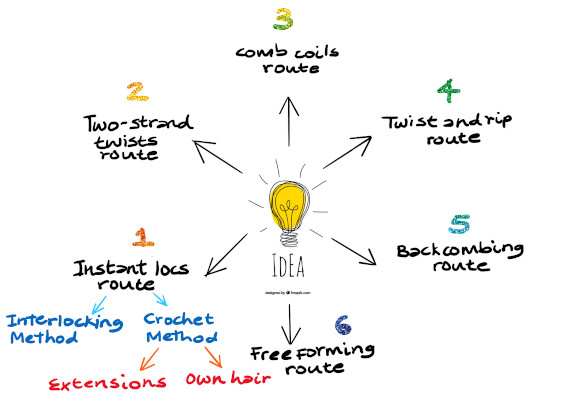
1) Instant locs route
With the instant locs route, one does not have to wait months on end to get their hair to loc. Instant locs can be achieved by using either the Crochet Method or the Interlocking Method. In another blog article, I outline the differences between the Crochet Method and the Interlocking Method in achieving instant locs. I believe the Crochet Method is superior and as a result, I use it to install locs on my clients. I prefer this method mainly because it produces smooth, even dreads. Other advantages of the Crochet Method are that:
- it instantly locs 99% of all hair types
- it produces tight and consistent locs
- it is more comfortable than other methods
- one can immediately wash their dreadlocks after installation
- it is suitable for all hair types
On the other hand, the Interlocking Method produces bumps in dreadlocks leaving them looking uneven in thickness with a braided look. Also, the Interlocking Method can cause the roots of the hair to split into two sections leading to weakening and breakage of dreadlocks.
If you would like to attach dreadlock extensions to your hair, the Crochet Method is the superior way to do so. Just ensure the extensions you use are 100% human hair.
a) Instant locs route (with extensions)
When choosing to attach dreadlock extensions, one needs to have hair that is healthy with no thinning or bolding areas. This is to ensure that the hair follicles on the scalp are strong enough to handle the attached dreadlock extensions. I use the Crochet Method to firstly crochet my client’s hair into dreadlocks, then attach extensions at the tip of the locs. Dreadlock Extensions can be added whether one already has dreadlocks installed or when starting dreadlocks from scratch.
I only attach 100% human hair dreadlock extensions to my client’s hair. These are very light in weight and are available for preorder. As such, they are custom made to the specifications of the client. Below are examples of dreadlock extensions available for preorder from Dreadlocks By Crochet.

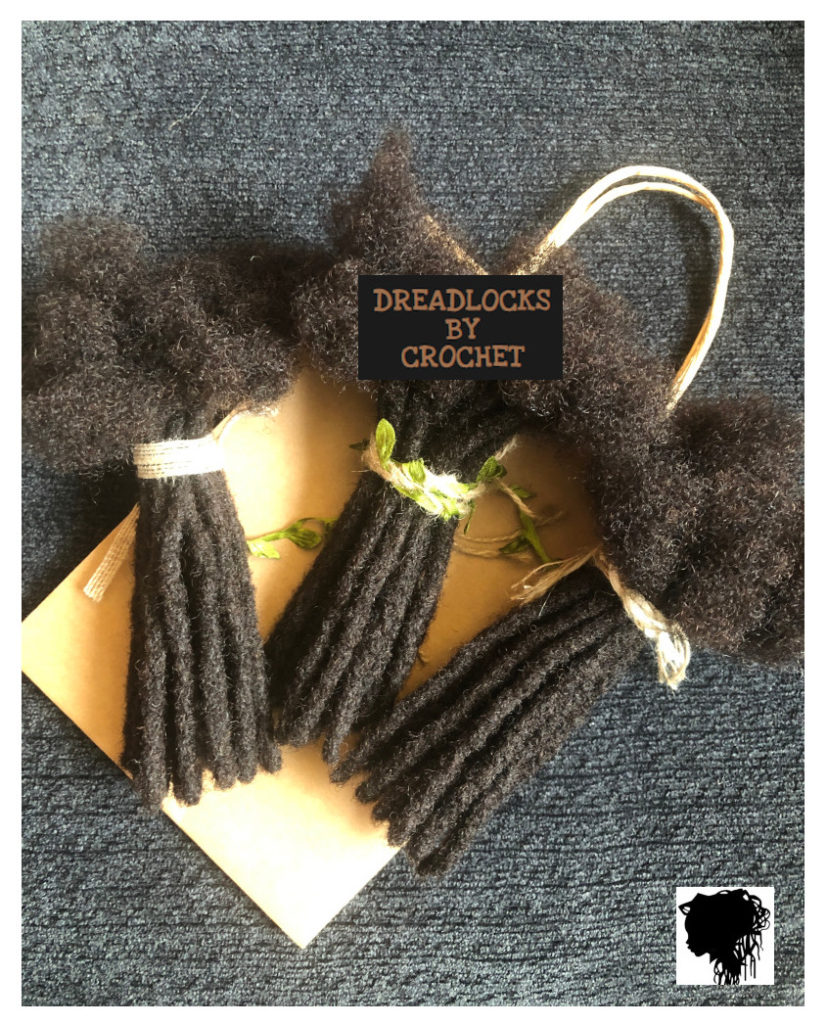
b) Instant locs route (with own hair)
Starting dreadlocks from scratch can be done using one’s own hair whether short or long.
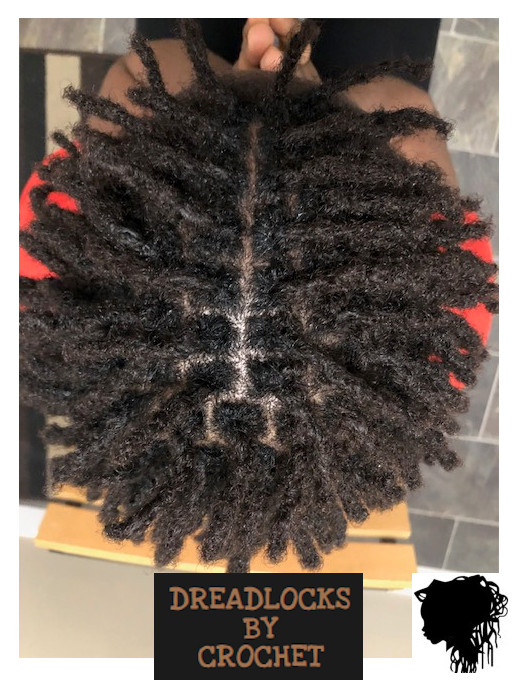
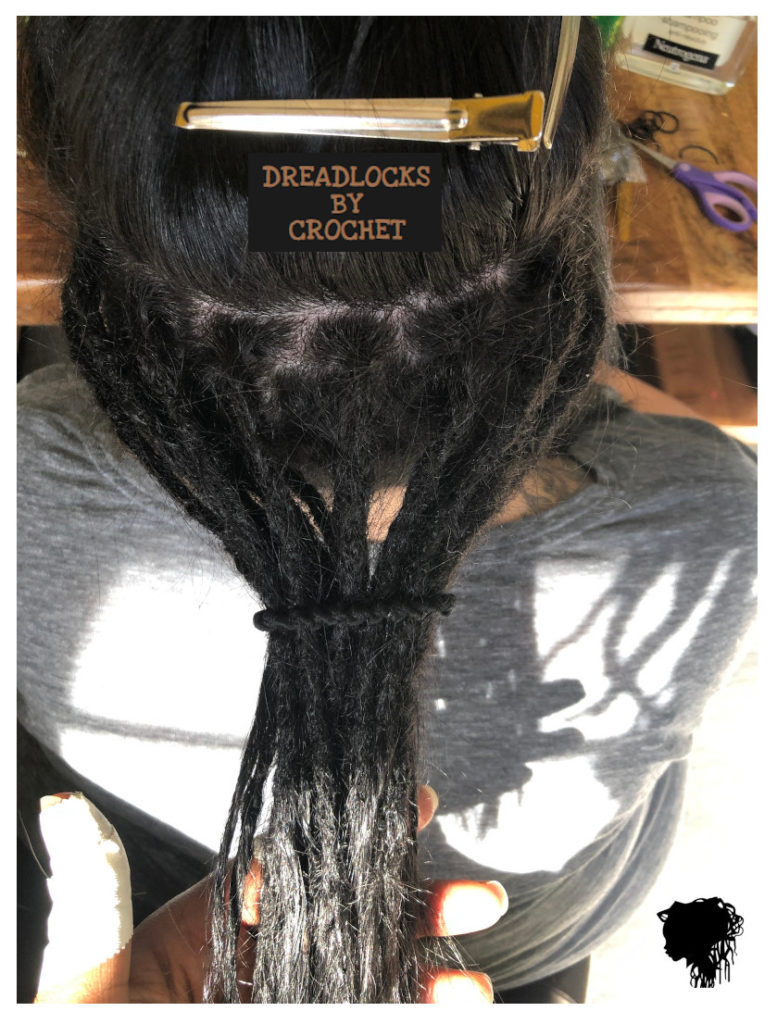
2) Two-strand twists route
To start dreadlocks using Two-Strand Twists, one must have thick and tightly curled textured hair. Here are the steps to follow:
- Do a Three-Strand Braid from the scalp up to 2 inches into the hair
- Then do a Two-Strand Twist from there up to 2 inches away from the tip of the hair
- And finally, finish off with a Three-Strand Braid up to the tip of the hair

Doing the Two-strand twists this way ensures that each dreadlock stays intact. Patience is key in letting nature take its course to form the dreadlocks! It will take about 6 – 12 months or slightly longer for the appearance of the twist to disappear and for the dreadlocks to completely mature into solid-looking dreads.
3) Comb coils route
Using Comb coils to start dreadlocks works well with thick, tightly textured hair. A comb is used to create uniform coils on each section of the hair throughout the head. It’s advised to use organic gels as opposed to wax to keep hair moisturized and to give the hold to keep the coils intact. Gel can wash off and will cause some buildup in your dreadlocks. Wax, on the other hand, is sticky, not water-soluble and will attract dust and lint to your dreadlocks which will be much more difficult to get rid of in the long run.
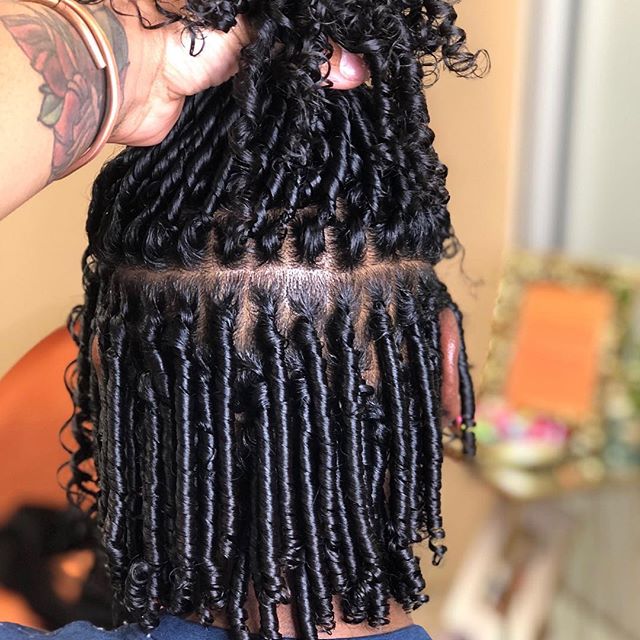
Like starting dreadlocks with two-strand twists, patience is key when dreadlocks are started using comb coils. Unraveling of the dreadlocks is inevitable and maybe very annoying! It will take approximately 6-12 months or slightly longer for the dreadlocks to begin maturing.
4) Twist and rip route
The Twist and rip route can be used to start dreadlocks on straight hair. This method works best on long hair because the more knots one can put into the hair, the more solid the dreadlock will look and feel.
To begin, one must section the hair into the desired thickness and hold each section at the roots with a rubber band. Following this, one must twist the hair 1-3 times at the root, then grab 2 pieces of hair (as shown in Pic A below) and rip towards the root of the hair. This process must be constantly repeated along the length of the dreadlock up to the tip. The friction caused as the hair pulls past each other during the ripping process is what causes the knots to form in the hair.

Dreadlocks formed using the Twist and Rip route initially look like those in Pic B.
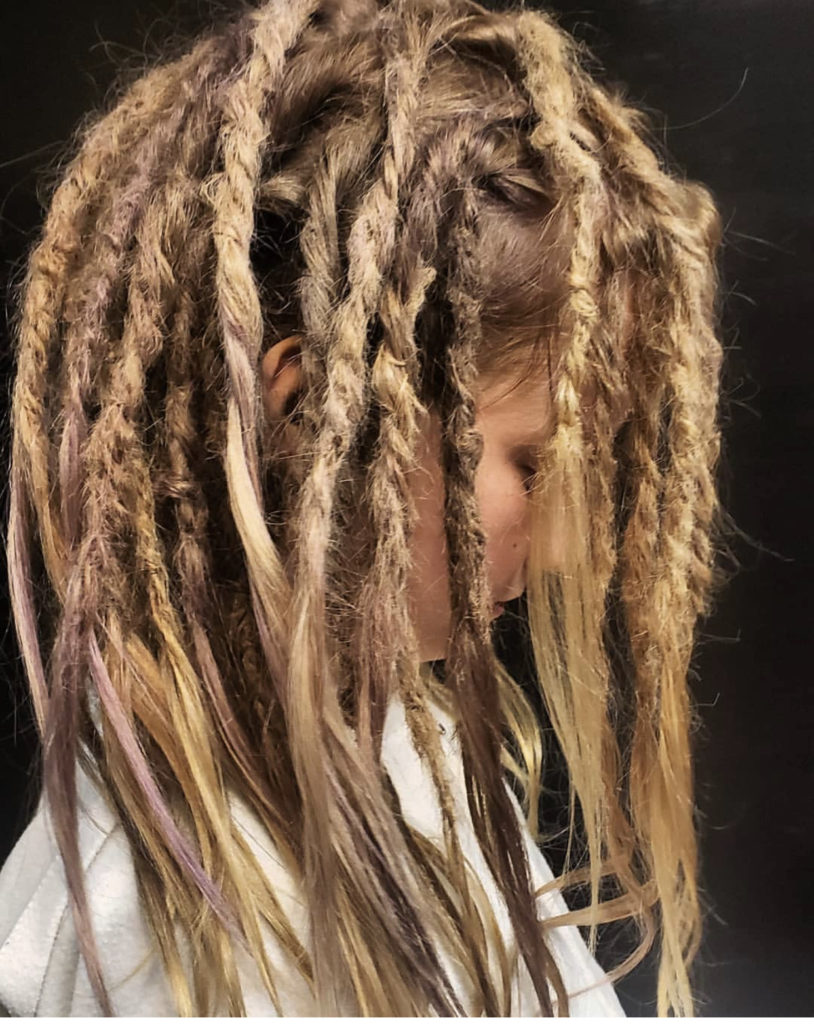
It’s important to note that, if more than three twists are done before the rip, more gaps will form along the dreadlocks and these will then easily wash out. The key is to have fewer twists and many more rips. It will take approximately 6-12 months or even longer for the dreadlocks to begin maturing.
5) Backcombing route
This method can be used to start dreadlocks on hair that is naturally straight, such as that of Caucasians.
To backcomb, a specific comb is used, such as one shown in the picture below.
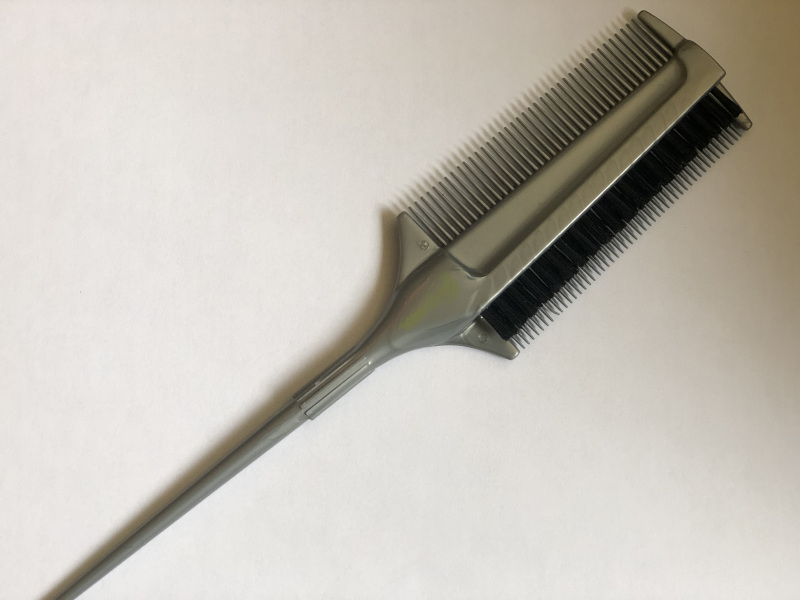
Essentially, each section of the hair is combed backward towards the scalp from tip to root using the side of the comb with the tiny back bristles. Backcombing intertwines the hair causing it to mesh and form the basis of a dreadlock.
Usually, backcombing leaves hair with more frizz than it had before. Some Locticians prefer to backcomb straight hair to give the hair some texture before using the Crochet Method to tighten the dreadlocks and reduce the frizz. Others simply palm-roll the dreadlocks after backcombing and do nothing else to them.
Dreadlocks formed using Backcombing + Plam-rolling take much longer to mature than those formed using the Backcombing + Crochet Method.
6) Freeforming route
Freeform dreadlocks form organically with no manipulation. To develop them, one just needs to wash and dry their hair and the let the hair do its thing. This is done to remove any oils and keep the hair clean to allow the locking process to occur. During this process, no combs or brushes of any sort should be used on the hair as this will reverse the dreadlock formation process.

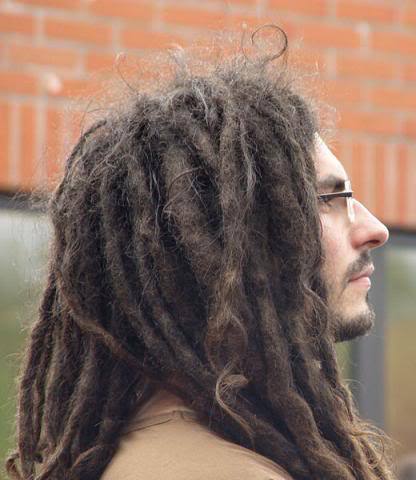
Washing 1-2 times a week is recommended for those wanting to freeform. Dr. Bronner’s Pepermint or Dr. Bronner’s Tea Tree soap (shown below) is my favorite dreadlocks shampoo. Occasionally, a free-former should separate any dreadlocks that seem to be joining together to form a larger dread at the roots.
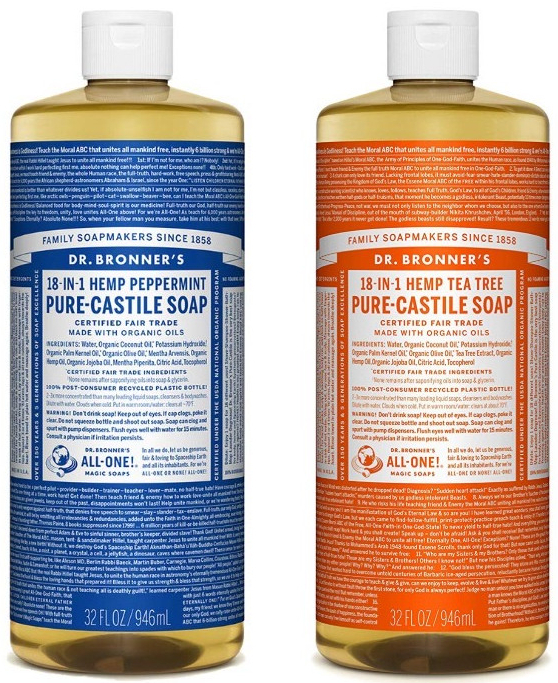
With all the dreadlock installation routes we’ve discussed here, we hope we have provided you with all the information you need to start your dreadlock journey in the best possible way!